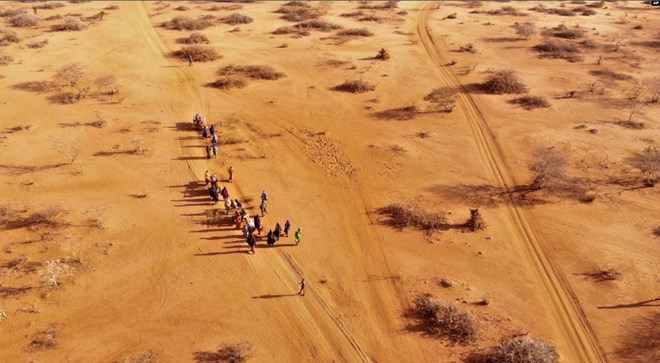Tens of thousands of Somalis are living in refugee camps in Kenya’s Dadaab, but the U.N. refugee agency warns that their humanitarian situation is getting worse as funding runs out and the Horn of Africa is gripped by an unrelenting drought.
Over the past two years, more than 80,000 Somalis have entered Kenya’s Dadaab refugee camps as a result of conflict and drought, including more than 24,000 since September.
The surrounding communities and the estimated 230,000 refugees already residing in the camps are bearing a heavy burden as a result of this.
Refugees, particularly those who have arrived since the end of September, are in urgent need of assistance, according to the U.N. agency for refugees, UNHCR. There is a shortage of shelter for the new entrants, it claims. Due of this, many people are being forced to live in temporary housing with little to no access to sanitary facilities.
Worse still, according to UNHCR spokesman Boris Cheshirkov, more than 350 individuals, mostly children, have contracted cholera since an outbreak began at the end of October. He said that the efforts of health partners have reduced the spread of cholera. However, there is still a chance of getting sick again.
“UNHCR is extending sanitation and hygiene services to the edges of the camps and providing clean drinking water to new arrivals in Dadaab. To ensure that the needs of the most vulnerable are satisfied, we also offer tailored protective services. Children who are malnourished are being evaluated and admitted to stabilization facilities, according to Cheshirkov.
He mentions that the UNHCR also supports the host communities in the area. Boreholes are being repaired, water is being trucked in, and generators are being provided for water pumps. He claimed that the UNHCR and the Kenyan government are working to find long-term solutions to this intractable issue while attending to the immediate needs of the local and refugee populations.
In the metropolitan regions and refugee camps of Dadaab and Kakuma, Kenya has been harboring more than 500,000 refugees and asylum seekers for more than three decades. After Ethiopia, this is the second-highest population in Africa.
According to Cheshirkov, there are currently no workable solutions, including voluntary return to Somalia or relocation in third-world countries.
“Right now, our main priority is figuring out how to help refugees in Kenya become self-sufficient. And how do people access businesses? Through education, training for specific occupations, and access to financial services. So that they have hope when a longer-term solution to their predicament is discovered,” he stated.
Meanwhile, the UNHCR issues a warning that the lack of funding is impeding its efforts to save the lives of more than 257,000 Kenyans who are suffering from a drought. It mentions that only half of a June appeal for $11.1 million has been funded.

